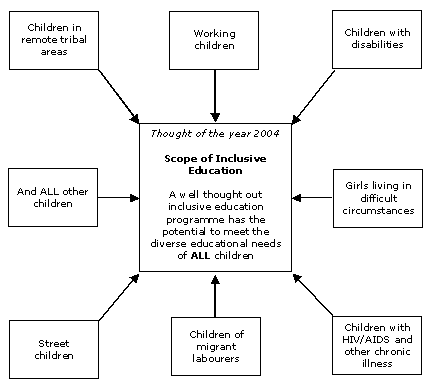INCLUSIVE EDUCATION
notes compiled by : Neha Gupta (9958010750)
Inclusive education happens when children with and without disabilities participate and learn together in the same classes. Research shows that when a child with disabilities attends classes alongside peers who do not have disabilities, good things happen.
For a long time, children with disabilities were educated in separate classes or in separate schools. People got used to the idea that special education meant separate education. But we now know that when children are educated together, positive academic and social outcomes occur for all the children involved.
We also know that simply placing children with and without disabilities together does not produce positive outcomes. Inclusive education occurs when there is ongoing advocacy, planning, support and commitment.
These are the principles that guide quality inclusive education:
All children belong.
Inclusive education is based on the simple idea that every child and family is valued equally and deserves the same opportunities and experiences. Inclusive education is about children with disabilities – whether the disability is mild or severe, hidden or obvious – participating in everyday activities, just like they would if their disability were not present. It’s about building friendships, membership and having opportunities just like everyone else.
All children learn in different ways.
Inclusion is about providing the help children need to learn and participate in meaningful ways. Sometimes, help from friends or teachers works best. Other times, specially designed materials or technology can help. The key is to give only as much help as needed.
It is every child’s right to be included.


